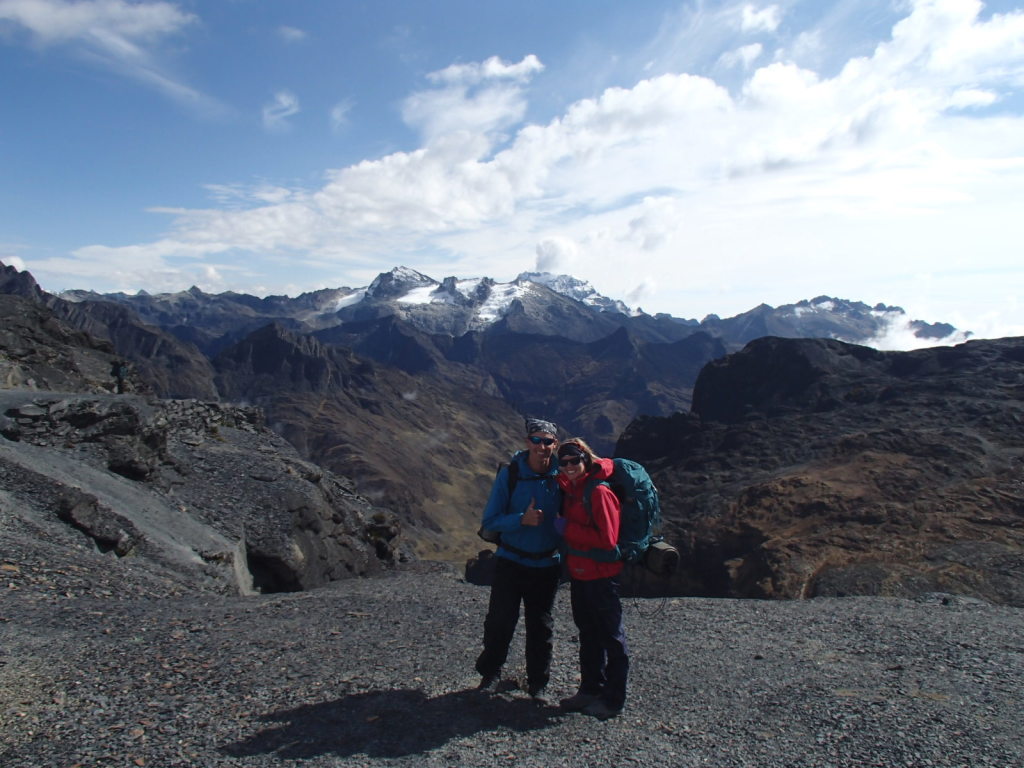
Bolivia is one of my favorite countries. Though it is the poorest and one of only two landlocked countries in South America, it is filled with stunning, untouched landscapes that took our breath away each day we were there. It’s well known for its incredibly distinct geographical areas: the high plateau of the Andes (altiplano), the high mountains (cordilleras), the valleys between, and it’s eastern plains of the Amazon. After being there for about two weeks, we couldn’t believe the natural diversity found in this one country. We also learned that Bolivia is the most indigenous country in SA, with more than 50% of the population maintaining traditional values and beliefs. We were excited to head to its capital, La Paz, and to explore more of its nature in the Yungas.
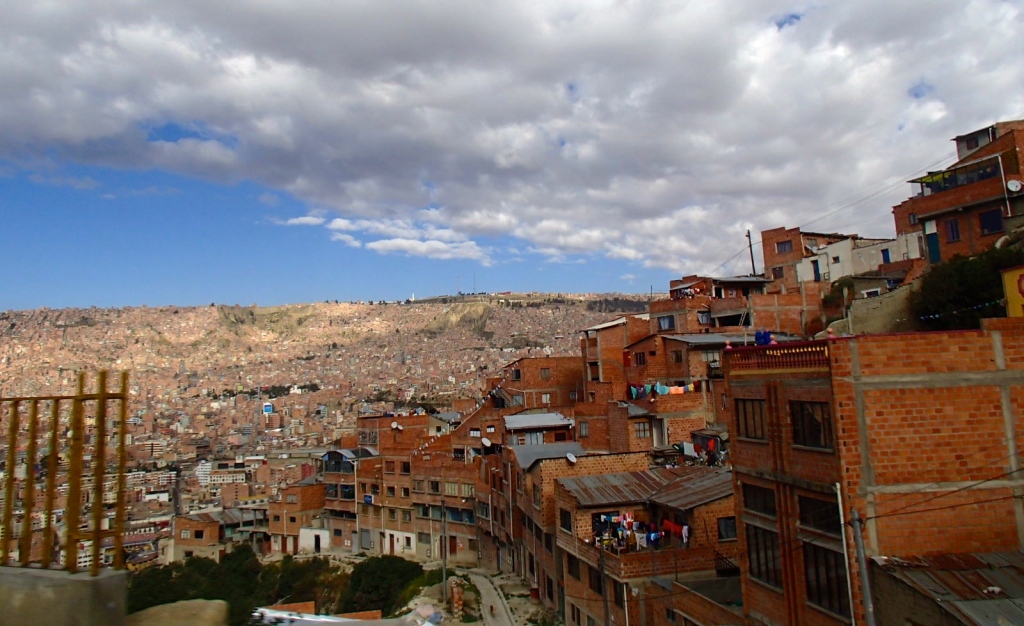
We took an overnight bus from Sucre to La Paz, arriving at 6a.m. to complete and utter chaos. The bus station was packed full of people, and the main roads going into the city center were all blocked off. After asking around, we found out that the weekend we arrived was the weekend of a huge event, the Fiesta del Gran Poder.
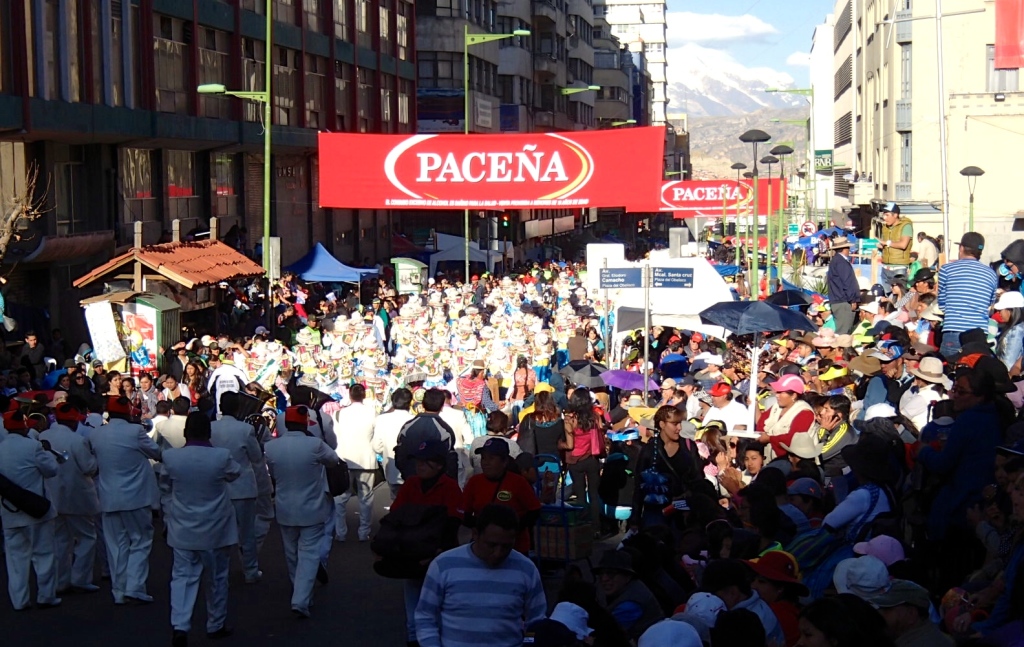 Translated as the ‘Festival of the Great Power,’ this is a yearly religious celebration honoring Jesus Christ, and showcases Bolivia’s rich culture. The festival features over 30,000 dancers who parade through the city streets of La Paz in their colorful traditional costumes, and mixes ancient folklore and tradition with their Christian religion.
Translated as the ‘Festival of the Great Power,’ this is a yearly religious celebration honoring Jesus Christ, and showcases Bolivia’s rich culture. The festival features over 30,000 dancers who parade through the city streets of La Paz in their colorful traditional costumes, and mixes ancient folklore and tradition with their Christian religion.
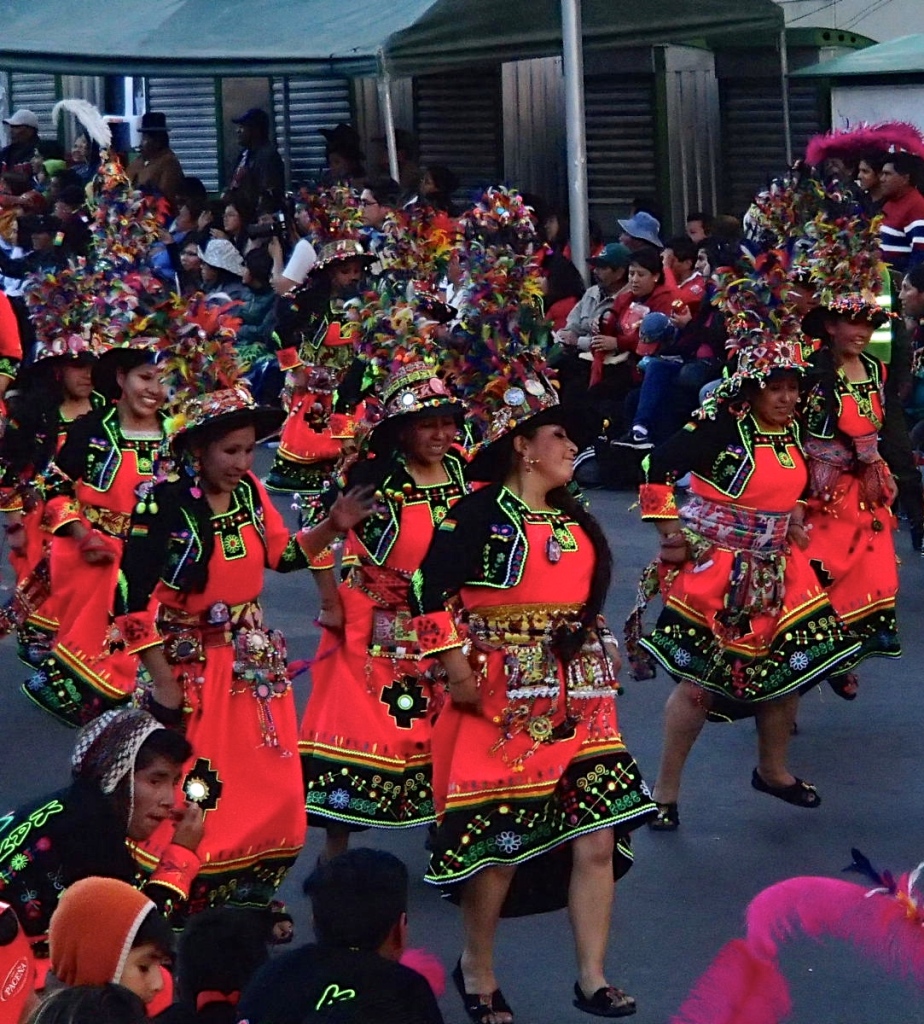
We were excited about the festival, but needed some shut-eye stat. We felt extremely beaten down after our overnight bus trip, so we finagled a cab to take us 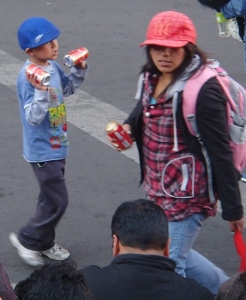 around the city chaos to our hostel and immediately passed out. We woke up refreshed around lunchtime, then walked downtown into the teaming masses of people. The streets were packed to the gills with people eating skewered meats, choclo, saltenas, and hundreds of vendors aggressively selling Pacena beer (La Paz’ local brew of choice). Even kids who looked like they were about 7 years old were selling Pacena beers, and people were buying in mass quantity. It was nuts! There was a massive parade on part of the streets, lined with bleacher seating, but it was blocked off to the general public unless you paid.
around the city chaos to our hostel and immediately passed out. We woke up refreshed around lunchtime, then walked downtown into the teaming masses of people. The streets were packed to the gills with people eating skewered meats, choclo, saltenas, and hundreds of vendors aggressively selling Pacena beer (La Paz’ local brew of choice). Even kids who looked like they were about 7 years old were selling Pacena beers, and people were buying in mass quantity. It was nuts! There was a massive parade on part of the streets, lined with bleacher seating, but it was blocked off to the general public unless you paid.
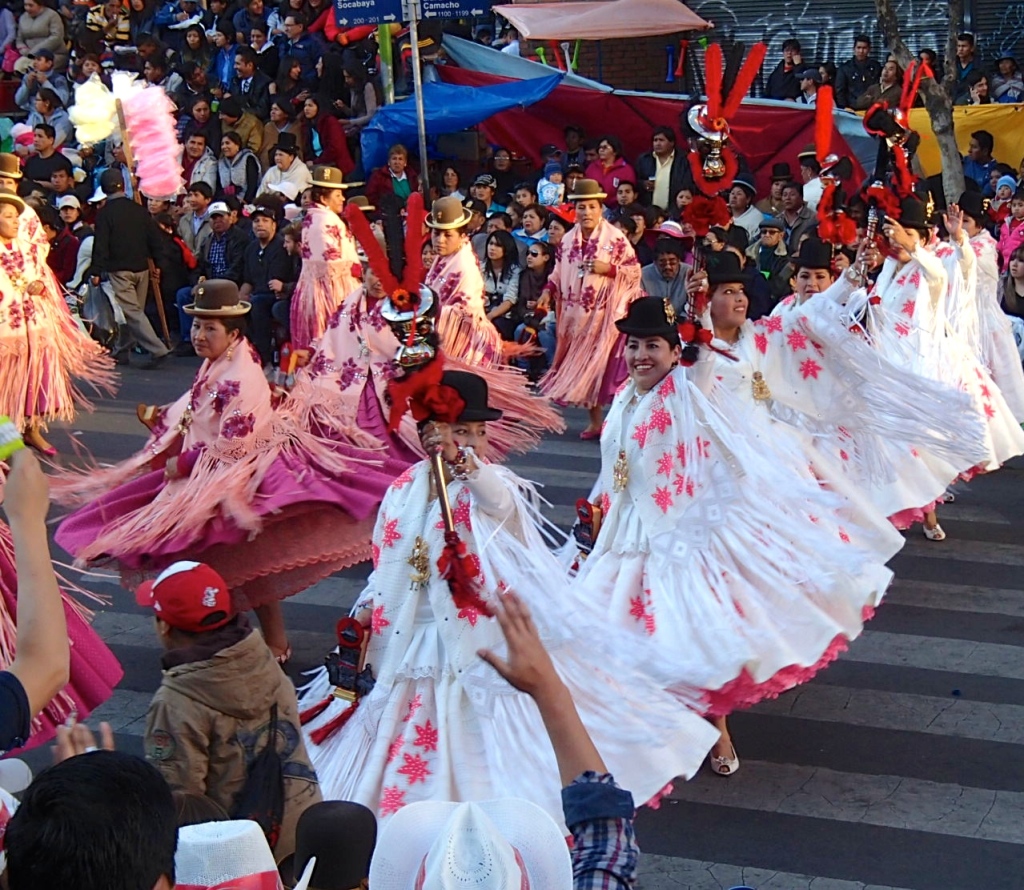
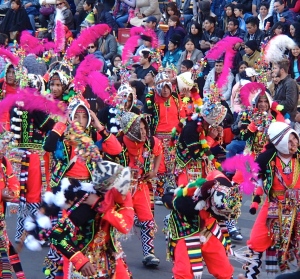 We decided to join in the festivities and got tickets to some bleachers. We were packed in like sardines on the top level, but it was great! We grabbed a Pacena and joined in the cheering. There were thousands of people from all over Bolivia; various towns, villages, schools, and organizations, all dancing down the street in their traditional indigenous costumes. The girls all wore beautifully detailed dresses, and some of the men wore elaborate colorful masks like what you’d see at Carnival. Each set had a group of ladies, a group of guys, and their band, who’d typically wear suits or classy outfits while banging their massive drums. It started at 8 a.m. that day and we heard that it went on until after 2 a.m. We only stayed down there for a couple hours, but we loved it!
We decided to join in the festivities and got tickets to some bleachers. We were packed in like sardines on the top level, but it was great! We grabbed a Pacena and joined in the cheering. There were thousands of people from all over Bolivia; various towns, villages, schools, and organizations, all dancing down the street in their traditional indigenous costumes. The girls all wore beautifully detailed dresses, and some of the men wore elaborate colorful masks like what you’d see at Carnival. Each set had a group of ladies, a group of guys, and their band, who’d typically wear suits or classy outfits while banging their massive drums. It started at 8 a.m. that day and we heard that it went on until after 2 a.m. We only stayed down there for a couple hours, but we loved it!
While I’m not a huge fan of the cities in Bolivia, I really enjoyed La Paz. La Paz is the world’s highest capitol city, sitting at 12,000 feet above sea level. The heart of the city sits in a giant bowl that continues sprawling upwards, surrounded by the altiplano mountains. Todays it’s main street is where the Choqueyapu River once flowed.
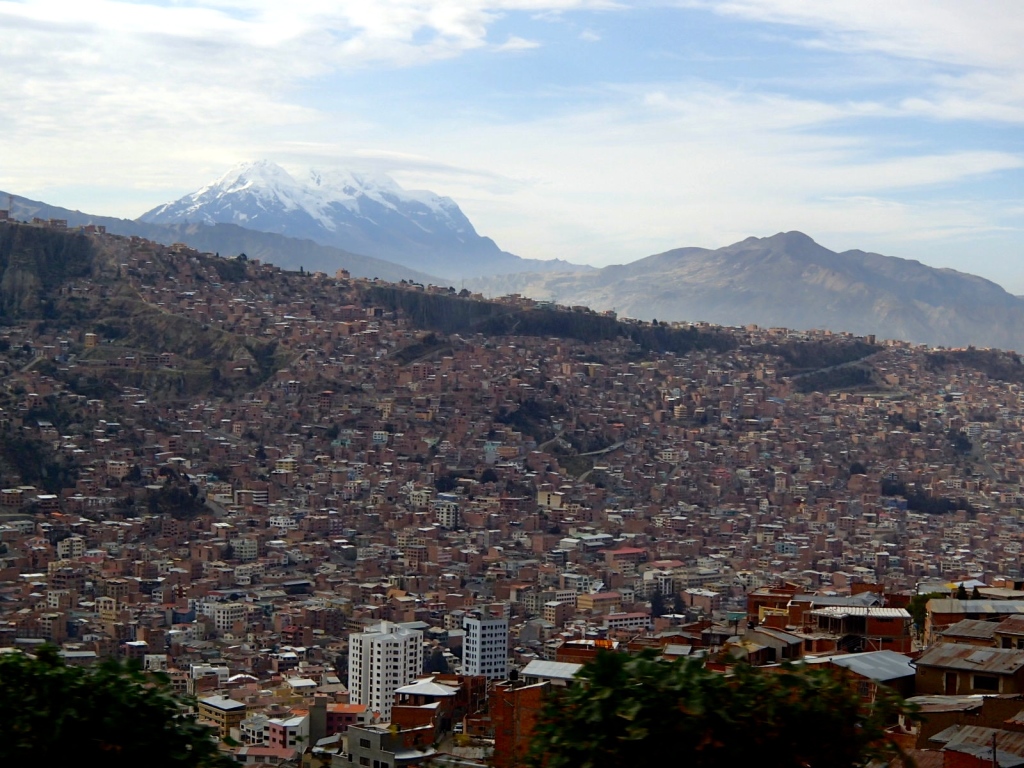
The history of La Paz is complex and fascinating. It was founded by the Spanish as a center of power in the Andes, but it has always had a dual identity- that of the indigenous and the European. Much of the city feels like a giant market, and it was a lot of fun for us to get lost and explore. We stayed at what was probably the best hotel on our trip to date in La Paz, so we did some relaxing and planning there too. In total we stayed in the city for about 4 days before heading back into the mountains again to do the famous El Choro trek nearby.
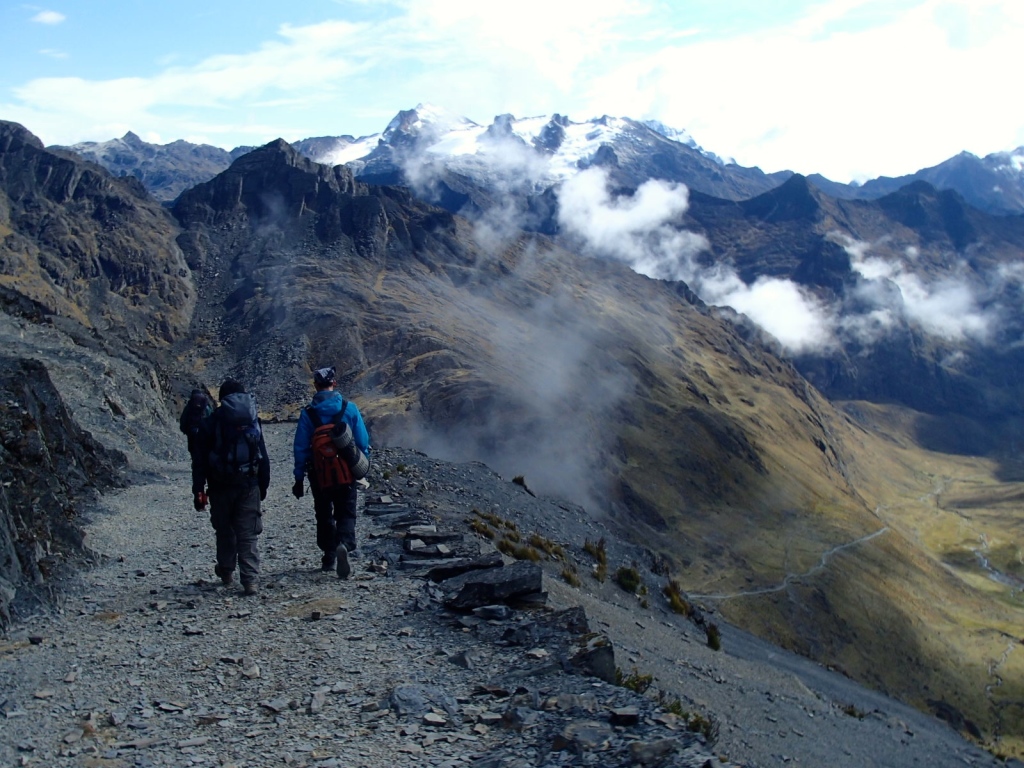
The El Choro trek, one of Bolivia’s most popular hikes, is a 3-day trek that starts in La Cumbre (one-two hours north of La Paz) and ends near Coroico in the humid Yungas, traversing the Cordillera Real and Parque Nacional Cotopata. We were concerned about how well the trek would be marked, so went through a company called Zig Zag Adventures rather than going on our own. It was a really great experience with them, though in retrospect we really could have done this one on our own. We were a little spoiled because we had a cook and a guide, and it was just Josh and I! Rudy was our guide, and he was awesome! He was a native Pacena who spoke good English, and knew all about the area. He was also my Spanish tutor for the 3 days we hiked. I wanted to practice my Spanish, so we spoke predominantly Spanish during the trek and it really did help make me better.
Day 1
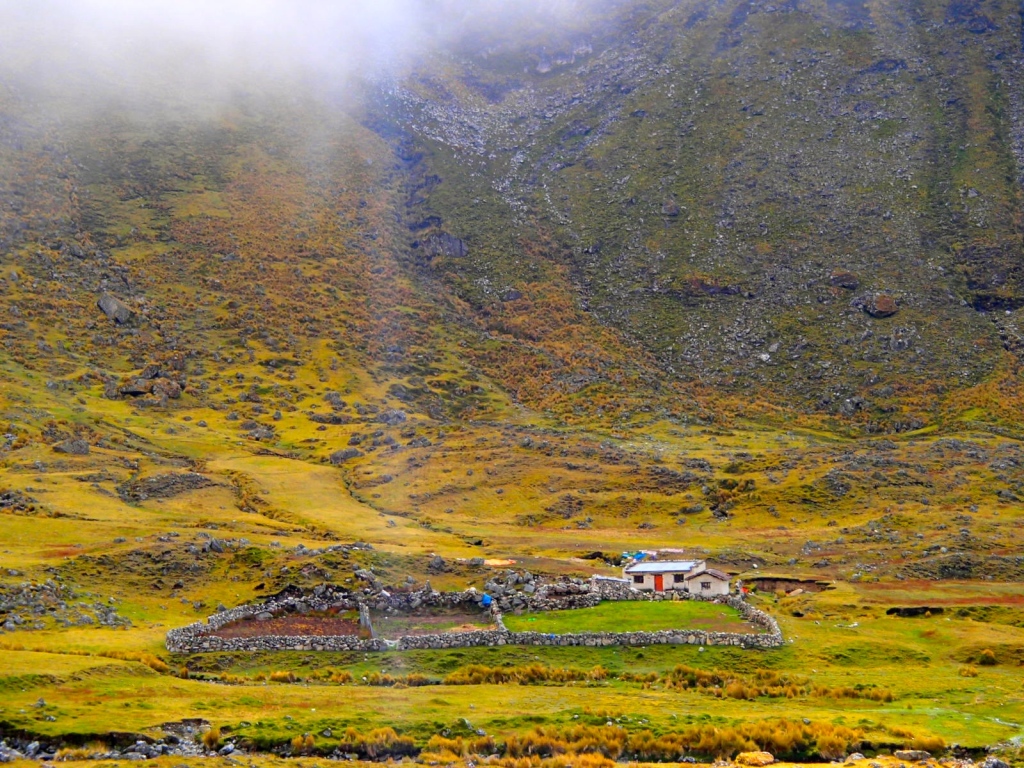
For us the trek was moderate. The first day we were at almost 16,000 feet above sea level and you could tell. We definitely felt short of breath as we walked through the mountains, packs on our backs huffing and puffing, but our gear was pretty light and we were mainly going downhill the whole first day. If you had knee troubles this day could really kick you hard. We made camp our first night at Challapampa, which was at 9,184 feet. Though it was much lower than we started that morning, it was still super cold come nighttime. We had a really simple but good meal of pasta and meat sauce, and passed out in our tent early.
Day 2
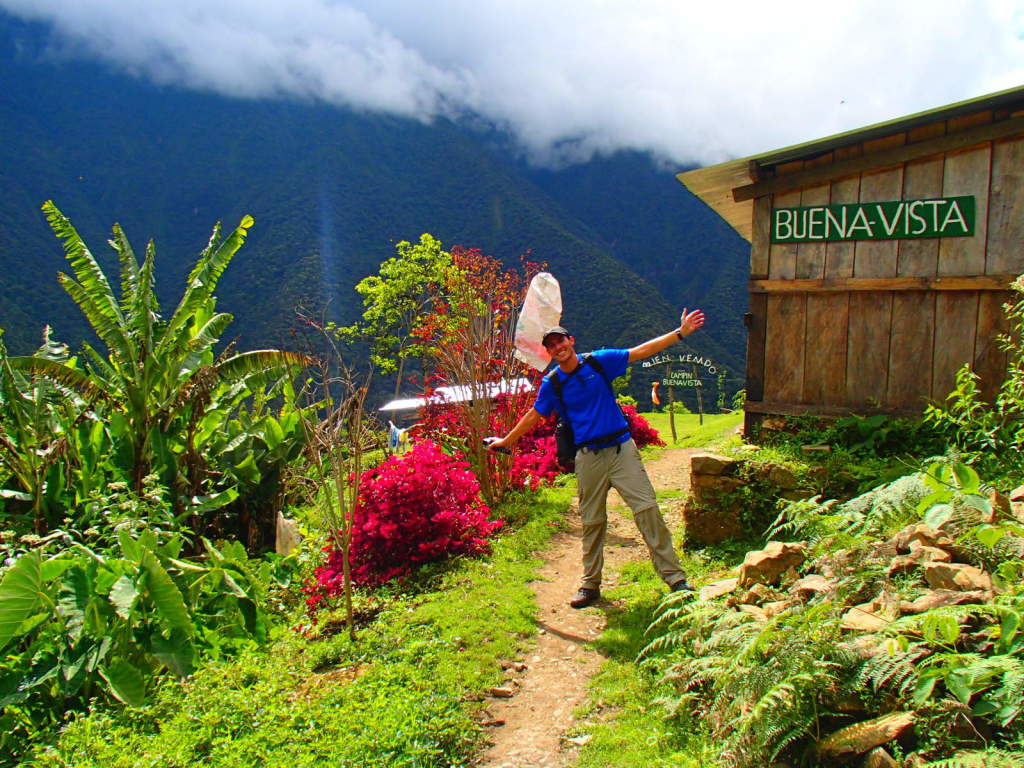
The next day we had good weather, but you could start to see the rapid change in climate, vegetation and wildlife. We passed through the cloud forest, and the bugs came out. As we continued descending, we started following a large river, and parts of the trail were really muddy. It was beautiful, with butterflies and tropical birds. Right before lunch we started climbing back up the mountains, and it got the better of me. It was really steep and the sun was beating down our backs. When we got to the top we reached our lunch spot, Buena Vista, which indeed did have great views. We had a hearty lunch and continued onward until we reached our camp that night, San Francisco, which was at 8,528 feet elevation. We hung out there for a bit and met a couple (French and Greek) who were hiking the trail on their own. We also had another German guy that night who was trekking by himself with a guide. These ended up being the only people we saw on the whole trail, which was shocking to us but made it much more serene.
Day 3
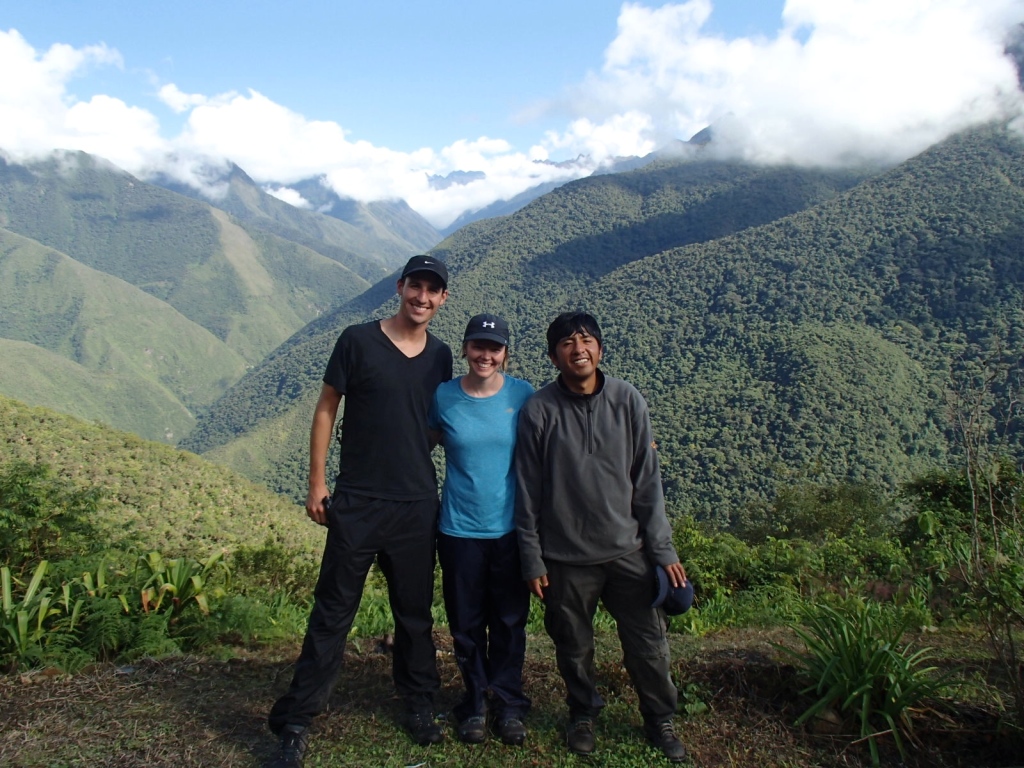
Our last morning of the trek we woke up in the dark at 5:30 a.m. to get started before the heat hit. It was raining pretty hard, and everything felt damp. We weren’t looking forward to trekking down the steep, muddy hills in the dark, but by the time we left the sun had peaked its way out of the clouds and the rain had subsided. The change in temperature this day was the most extreme by far. We started with all our rain gear and winter hats on, and by 10 a.m. we were in our t-shirts, drenched in sweat. We stopped at a few veiwpoints along the morning, Sandillani being one of them that was most memorable. It had an old Japanese Garden right on the edge of the mountains, with stunning views. It was here we realized our cook Evo was missing. He had been behind us all morning because his foot was hurting him, but we hadn’t seen him for a long time and Rudy got a little worried. He decided to have us continue moving forward to the end and we’d go look for Evo. With luck he’d find him quick and they could take the shortcut paths down the mountain and meetup with us. We were set to be done by noon, ending in a tiny town called Chairu (at 4,592 feet). We ended up making it all the way down to the trail’s end, with neither of them in site. It was incredibly hot and sticky when we finished, and we were out of water and hungry. We ended up having to wait for an hour or so before our guide came down with the food, and he quick made us some lunch. Josh and I celebrated the end by grabbing 2 Pacena’s from the mini-mart, and relaxed in the shade while we waited for Evo. He finally showed up, looking incredibly dejected and tired. We felt really bad! It turned out this was only the 3rd time doing the trek for him, and he just had on terrible shoes for the amount of altitude we were covering.
The trek was definitely one of our highlights of Bolivia, and South America. Check out a photo album here of all our highlights:
- Day 3: The end of the Hike


































Let’s cut to the chase. Did you see any alpacas? 🙂
WOW! incredible